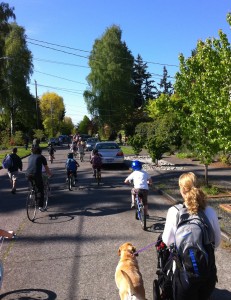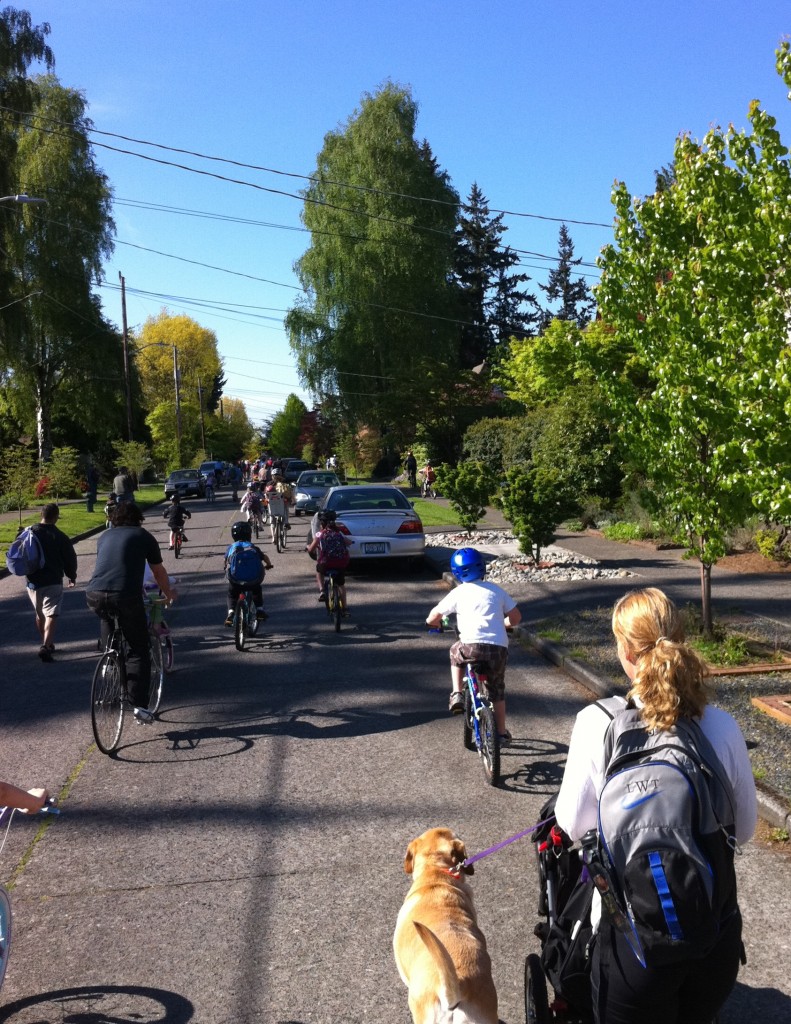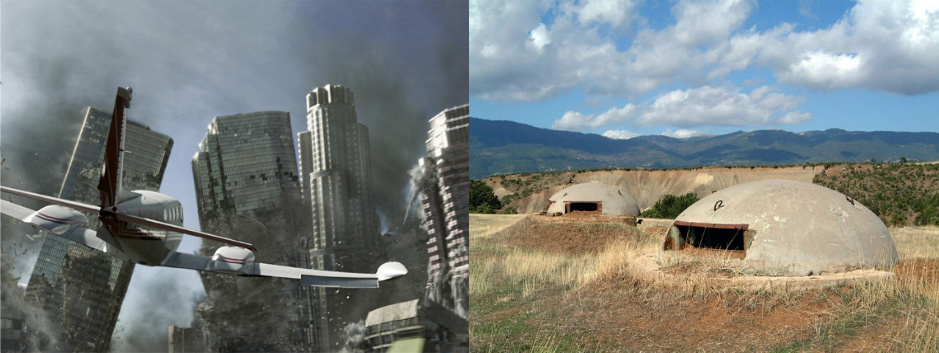
Are you interested in a transportation system that works for all users? With park-like streets in our neighborhood that are safe and enjoyable for walkers and cyclists of all ages?
Community members across Seattle have been coming together in the past year and a half to develop plans for Neighborhood Greenways – designated streets that prioritize pedestrian and bicycle use and connect to parks, schools, and neighborhood businesses.
The first Neighborhood Greenway project in our community will likely be along 39th Ave. NE from the Burke-Gilman to NE 75th St. This first Greenway may be constructed this coming summer!
RBCA’s Spring membership meeting (April 3, 2012 – 7 p.m.
Ravenna-Eckstein Community Center) provides a great opportunity to learn more about these greenways, through a presentation by Councilmember Sally Bagshaw, who is an avid supporter of this initiative. After the presentation there will be plenty of time for questions and discussion.
Neighbors are talking about 27th Ave. NE and 45th Ave. NE as possibilities for future Greenways, and about the need to provide a system that provides better connections for pedestrians and bicyclists to the forthcoming Roosevelt light rail station, Green Lake Park, the University District, and other neighborhood hubs.
The Wedgwood Community Council recently published a great overview of local efforts at http://wedgwoodcc.org/greenways-coming-to-a-street-near-wedgwood. Check out the information on Childrens Hospital’s Livable Streets Initiative, and the Portland video that shows how they’ve approached Neighborhood Greenways down there.
A NE Seattle Neighborhood Greenways group has recently formed to help flesh out ideas for local routes. More information is available at http://www.facebook.com/NESeattleGreenways.
What will Neighborhood Greenways mean for Ravenna/Bryant? And how can you get involved and lend your voice to the discussion? Come hear from Councilmember Bagshaw on Tuesday and find out!
~ Guest post by Clint Loper, NE Seattle Greenways




